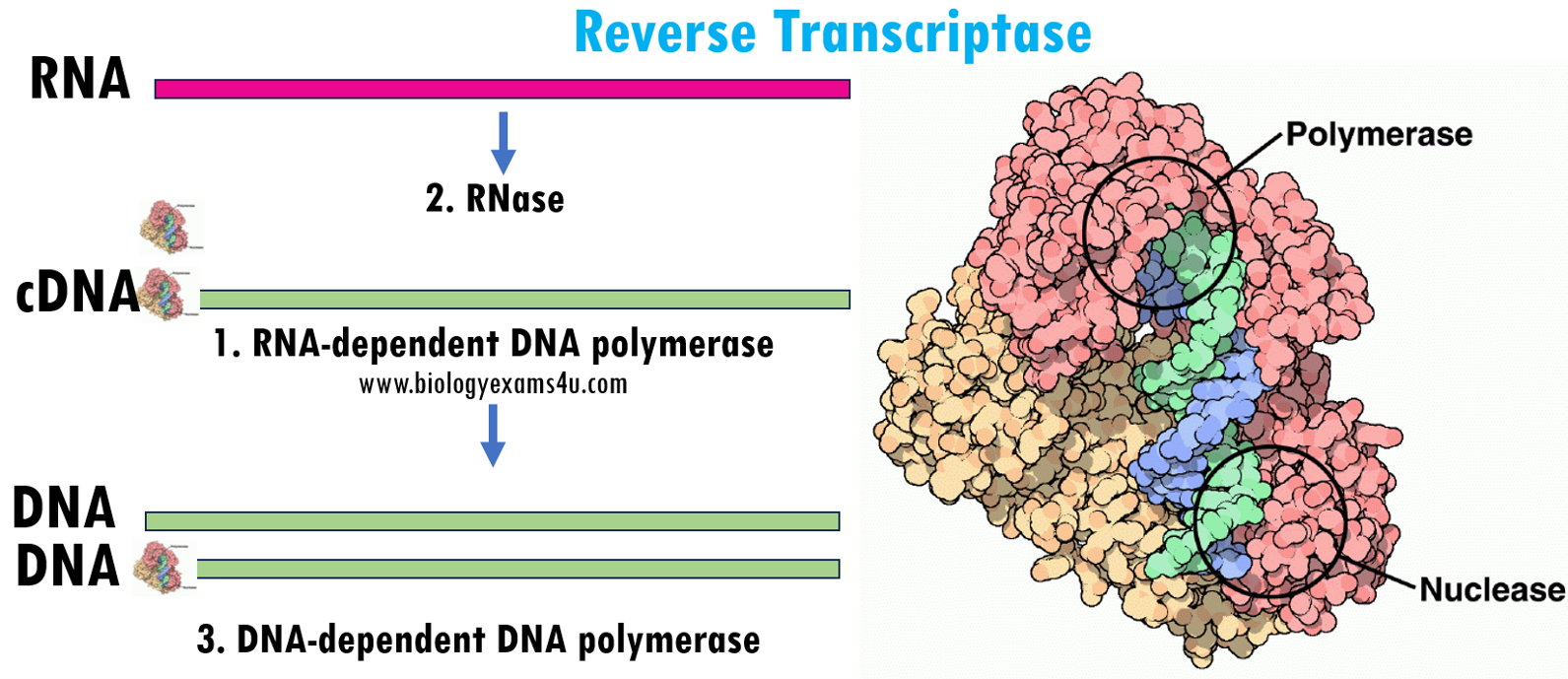Reverse transcriptase (RT) is an enzyme that plays a crucial role in the life cycle of retroviruses, such as HIV. It is the process of synthesizing DNA from an RNA template.
Discovery:
Reverse transcriptase was discovered by David Baltimore and Howard Temin in
1970; therefore, also called as Teminism.
Function:
RT is responsible for generating complementary DNA (cDNA) from an RNA template,
a process known as reverse transcription.
Structure:
The crystallographic structure of HIV-1 reverse transcriptase consists of two
subunits, p51 and p66.
Biochemical Activities: Retroviral RT has three sequential biochemical
- RNA-dependent DNA polymerase activity: RNA of virus is used as template for the synthesis of cDNA; forming an RNA-DNA hybrid.
- Ribonuclease H: RNase activity removes RNA from RNA-DNA hybrid.
- DNA-dependent DNA polymerase activity: The first strand of this DNA is used as template for the synthesis of second DNA strand.
Role
in Viruses: Viruses like HIV and hepatitis B use reverse transcriptase to
replicate their genomes.
Applications:
Reverse transcription is widely used in gene expression studies in RT PCR,
cancer research and viral load estimation.
These
are the steps involved in RT PCR
Steps
in Reverse Transcription PCR:
- RNA extraction
- Primer design and selection
- Reverse Transcription using RT enzyme: Conversion of RNA to cDNA
- Separation of RNA-DNA hybrid
- PCR amplification: Amplification of the cDNA
- Gene quantification: Quantifying the amount of cDNA, which corresponds to the amount of original RNA; thus, useful in gene expression studies.
Applications: Reverse transcription is widely used in gene expression studies, cancer research, and viral load estimation.

